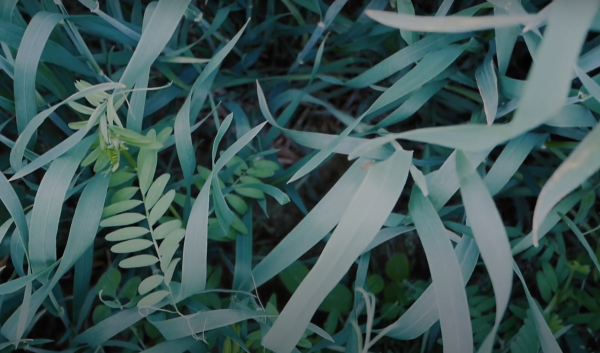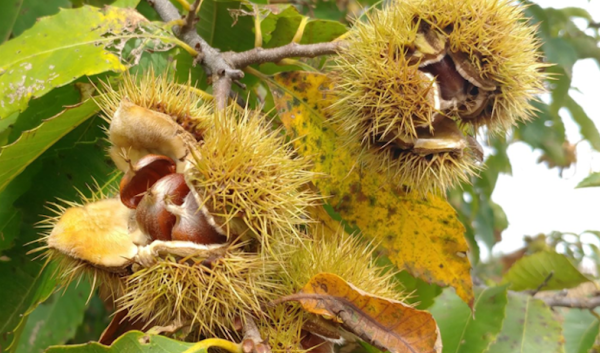A rotational stocking system controls the timing and intensity of grazing by rotating animals among paddocks, and gives the pastures time for rest and regrowth.
Heavy rain events have increased dramatically in the Northeastern United States. These downpours are causing more soil erosion and nutrient runoff. Increasing summer temperatures may also amplify plant stress and limit productivity. Consider adapting to these climate trends on your farm by using a rotational stocking system. Rotational stocking has other great benefits. Compared to continuous stocking, it improves forage yield and animal productivity per acre. This practice also promotes soil health, carbon sequestration, and maintains a farm’s environmental resources. Managing plant communities through rotational stocking can improve forage root structure and depth. Better root structure means healthier plants, greater water infiltration, and much less susceptibility to drought.
View factsheetA herd of benefits
- Soil structure, soil cover, and soil organic matter are all enriched. This in turn enhances life in the soil, reduces runoff, limits soil erosion, and promotes improved water quality. More even manure distribution increases manure management effectiveness and efficiency.
- Social benefits include scenic landscapes and healthier food products. When low-stress livestock management is combined with frequently moving livestock, animals become easier to handle. This reduces the risk of injury to animals and humans.
- Economic benefits include fewer herd health problems. Healthier herds mean lower veterinary bills and reduced animal replacement costs.
Rotational risks
- High livestock densities need to be properly managed. Otherwise you may face soil compaction, degradation to plant cover and animal habitat, and water quality issues.
- Rotational stocking is more labor, capital, and management intensive than a continuous stocking system. It does require more fencing, watering systems, and laneways.
- Poorly managed grazing can impair animal health and productivity, which can reduce profitability. Any errors in layout and execution can raise costs. If this practice is not implemented properly, milk production in dairy cattle may decrease more quickly than offset costs, hurting cash flow.
Applications methods and tips
Keep rotational paddock layouts simple. Consult with farmers currently practicing rotational stocking or other specialists to work out a layout and rotational system that fits your farm and pastures. University Extension, Natural Resources Conservation Service, or other reputable grazing consultants can all help.
Where possible, any hay land that is not currently grazed could be brought into the pasture system for grazing during the summer and fall to extend the grazing season. Try to use improved forage species and diversity in pastures. Also remember to allow for more forage residual (not grazing as closely to the ground) and appropriate rest time per rotation. Allow animals with higher nutritional requirements access to the best forage possible. You should also consider supplemental feeding (e.g., concentrate) to meet the nutrient needs of animals.
A good perimeter fence is a must. Electrified fencing such as single strand high tensile wire works well for pasture subdivisions. Movable or fixed water tubs connected to main pipelines can fulfill livestock water needs. Supply lines made from polyethylene tubing laid on the ground surface along fence lines can serve multiple paddocks.
In places where livestock traffic is frequent, laneways will help cut down on mud and erosion. Heavily used laneways may need underlayment with geotextile fabric and surfacing with crushed limestone, shale, or a more durable material. Dairy cows should be moved to a fresh paddock after each milking. Beef cattle, horses, sheep, and goats can be moved less frequently (either daily or every few days). Protect animals from severe weather elements by giving them access to shade or shelter.
Additional resources
- Climate Change Effects on Livestock in the Northeast US and Strategies for Adaptation
- View our factsheet on Weather and Climate Considerations for Dairy
- Look back at the 2015 Northeast Regional Vulnerability Assessment
- NRCS Pasture Resource Guides and Tools: Pasture management information, tools and economics
- Graze Magazine has articles that range from business success on grass-based farms to animal injury
- On Pasture relays research and farmer experiences on pasture management
- WVU Pasture Hay and Forage provides resources on forage production and management
- Northeast Pasture Grazing Guide is dedicated to improving pasture management
- UVM Extension offers a collection of blog posts on grazing and pasture management
- Adaptation Resources for Agriculture is a flexible, structured, self-guided process to identify and assess climate change impacts
This information was curated by Northeast grazing experts: Juan Alvez, Pasture Technical Coordintor, Center for Sustainable Agriculture, University of Vermont; James B. Cropper, Executive Director, Northeast Pasture Consortium; Lynn G. Knight, Agricultural Economist, USDA-NRCS; Ed Rayburn, Extension Specialist, West Virginia University; Howard Skinner, Physiological Plant Ecologist, USDA-ARS; Kathy Soder, Animal Scientist, USDA-ARS; and Mike Westendorf, Extension Specialist, Rutgers University.




